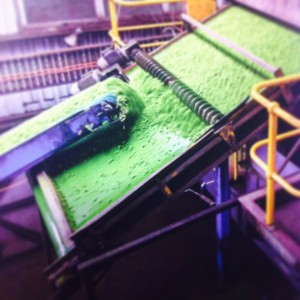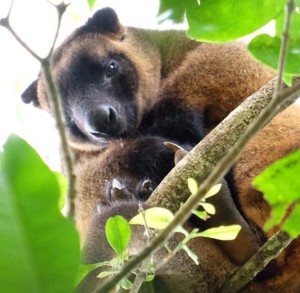I’m a tea lady. A true-blue brew girl. A leaf lover. I’m a little teapot short and stout.
I simply do not get out of bed for less than a 2 cup pot of black leaf tea, well steeped and ready to pour.
So it’s with great joy that we turned on to Atherton Tableland road towards Mandala and straight toward Nerada tea country.
Australia’s biggest tea plantation has been preparing leaves for us tea drinkers since 1962.
These days Nerada Tea Visitor Centre is really one whopping big tea room and shop, offering the usual Devonshire tea servings, tea steeping, pouring and quaffing accessories and rows of Nerada tea varieties.
It’s first point of difference is however the lush views of nearby tea crops, and the chance to read up on the story behind the man behind Nerada’s rise to teapot fame on the information panels. With its original crops planted at Bingil Bay near Mission Beach, a series of floods and storms in the 1940’s had almost rendered them forgotten if it wasn’t for the research and pioneering spirit of Dr Maruff .
Or, as I like to call him, Dr Tea.
Indulge me if you will. I’ve been worshipping at the the altar of my drug of choice, and I feel the need to enlighten the less-informed.
Dr. Alan Maruff, an early migrant from India and a successful practising GP in Innisfail in the 1950’s felt the strong urge to contribute to his adopted country and explore agricultural opportunities. The temptation of tea crops tickled his fancy, and he headed up the production of the tea plantation until 19 after re-discovering the first Australian teacrops down at Bingil Bay and planted by the Cutten brothers in 1884.
When you consider we are a nation with a strong tea drinking history, it’s amazing Dr Maruff isn’t more of a household name, as with Alfred Bushell (who opened Bushell’s tea shop in 1883). Where Dr Maruff evolved the tea industry for Australia was by persuading the the trading company Philp Burns to further establishing the tea industry in Australia and to injecting the necessary cash needed to take both our leaf industry and the Nerada Tea Estates name further.
We’ve got some pretty first-rate tea growing going on in Australia, and not just at Nerada. Why more Aussies don’t support greater purchases of Aussie owned and grown tea, is an ongoing battle for all Aussie tea growers.
Obviously the great Tea Famine of the 1950’s does not strike fear into the hearts of others as it does mine.
On August 19, 1955, tea drinkers around Australia awoke to the news that their favourite tipple would increase by 1 shilling per pound. Rumours of a price rise had surfaced several months earlier when Ceylon (now Sri Lanka), the source of most of Australia’s tea imports, raised its export duties. Under the law of the new federal budget, the Australian government passed the increased cost on to the consumer.
In Queensland, Premier Vice Gair reassured desperate tea drinkers, stating that tea would not be increased until the current stocks were sold out (See? I told you it was serious!) Newspapers of the day reported retailers under siege, and were rationing tea purchases With each cuppa poured, a ‘tea famine’ was feared as wholesesalers could not release new stock to stores until the price rise was gazetted. Fortunately such as situation did not eventuate, with the price rise coming into effect and fresh supplies delivered on September 1st.
Reason enough to support the Aussie tea industry I say, lest this horrible moment in Australia’s history occur again!
Perhaps if we all had more off an insight into the detailed process of tea plantation life we’d sign up to the fan club. The Nerada Tree factory offered a viewing platform to check out the tea making steps for ourselves. It told the story from crop growth to harvesting, curling, cutting and processing.
The bigger Squid was so inspired that he’s since become a card-carrying tea drinker himself (though his cup is a little too milky, and sugary for my liking … it’s still a proud mum moment for me).
Oh, and the other point of difference for Nerada Tea Plantation?
While waiting for our tea to brew, we got to view 2 rather sedate looking Lumholtz Tree Kangaroos in the nearby trees.
Now there’s something you don’t have served up with your jam and scones and cuppa everyday!
Tea has been an essential part of the Aussie diet since it was carried across the waters on the First Fleet in 1788. Support the Aussie tea industry, be it leaf or bag, lest those stinky coffee drinkers take over with more Gloria Jeans outlets.
Pour a cuppa and have a read up on the story of tea in Australia here.
I confess I also stockpiled tea goods from a roadside stall at nearby Nucifora tea too – a lovely drop as well that I’ll be sure to buy again.








